Exploring Karbala - History, Significance, and Iconic Landmarks
The city of Karbala is located 102 km from the city of Baghdad, and Yaqut Al-Hamawi mentioned in his Mu’jam Al-Buldan book in the origin of the city’s name: “As for the name’s origin, “Karbala” is the loose in the feet, we say: he came walking then his “Karbala”, so it is permissible to think that it was named as such for that the land of this place is loose”. As for Al-Karmali, he says in some of the researchers’ books that Karbala is carved from two words: “Karb” and “Allah” meaning Allah’s sanctuary or mosque.
Among the most prominent monuments in the city are:-
Al-Ukhaydir Fort - Exploring One of the Middle East's Greatest Forts and Its Rich History
Al-Ukhaydir Fort is one of the greatest forts in the Middle East and a prime example of Islamic architecture. Located in Ain Tamr, 15 km from Baghdad and 50 km southwest of Karbala, it sits at the crossroads of ancient trade routes between Kufa, Basra, Mosul, Damascus, and the Levant. The fort’s construction date and purpose remain unclear, with most theories being speculative.
The fort is believed to be named after its green surroundings in spring, or possibly after “Al-Ukaider,” a prince of the Kinda tribe. Historians debate its construction date: some suggest it dates back to the pre-Islamic era, while others claim it was built during the Islamic period by Isa bin Musa, an Abbasid prince.
The fort is surrounded by a fortified wall resembling a military castle, measuring 169 by 175 meters. It contains four corner towers and 44 surrounding towers. The Syrian series Al-Mutanabbi was filmed at this location, with actors Salloum Haddad and Ghalib Jawad portraying Al-Mutanabbi.
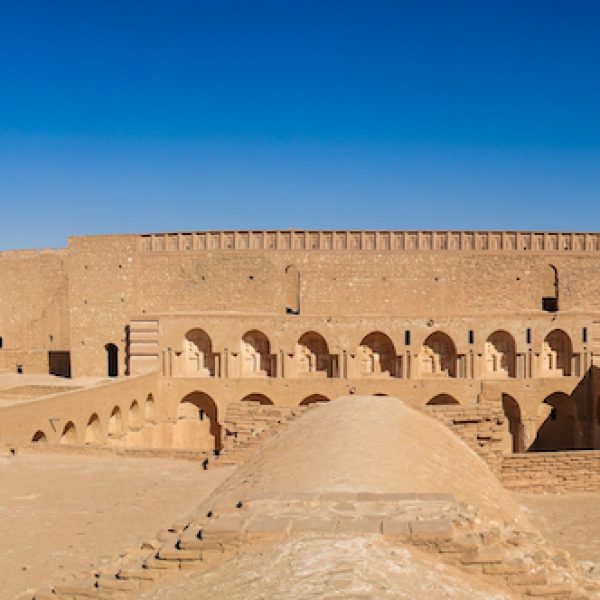
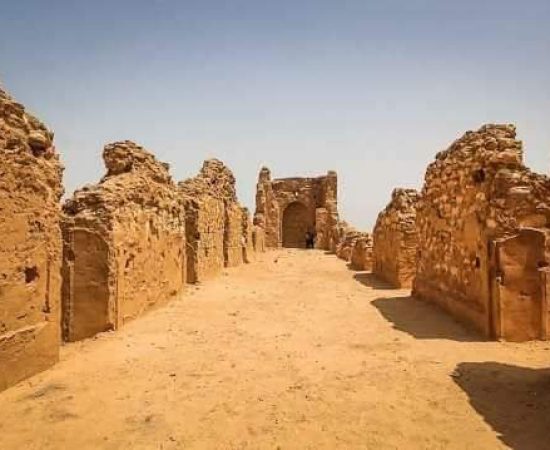
Exploring Al-Uqaisir Church - The Oldest Christian Settlement in the Middle East
It is 5 km away from Al-Ukhaydir fort. Its construction dates back to the fifth century AD, and it is considered the oldest church in the Middle East, built of limestone and fixed with plaster.
Al-Uqaisir Church is a very old Christian settlement that was built in the middle of the desert for fear of the authority at the time, and it used to take water from underground wells. The Sassanid state was tolerant of this church, in defiance of the Romans.
Its traces are still clear with Aramaic inscriptions on its walls, in addition to the existence of the altar, which faces towards Jerusalem, which is elevated by the rest of the church floor. You can also see the monuments of the graves near the Church. The word “Qusair” is local, and it is a diminutive of the Arabic word for “Palace”.
The Tar Caves - A Historical and Archaeological Marvel in Iraq
This name refers to the citizens of the region, where every elevated area is called a “tar,” and it is mentioned in the Holy Quran as “Tour Sinin,” meaning the mountain. These rocky heights extend from Karbala, near the Imam Ali Dropper Shrine, to the Najaf Sea, consisting of caves surrounded by valleys. Beneath this important site on the island, there are approximately 400 caves where people once lived. Excavations led by a Japanese mission, headed by Professor Fuji, revealed that these caves date back to around 1300 BC.
Fuji’s analysis of the rocks indicated they were artificially created by humans in calcium bicarbonate-saturated rock layers around 1300 BC, likely for defensive purposes. Later, the caves were used for burials.
Due to their strategic location, these caves were used by tribes, as rest stations for desert convoys, and as retreats for clergy in the state of Al-Manathira. They became monasteries for seclusion and worship at various points in history before eventually turning into burial sites, as excavation missions revealed.
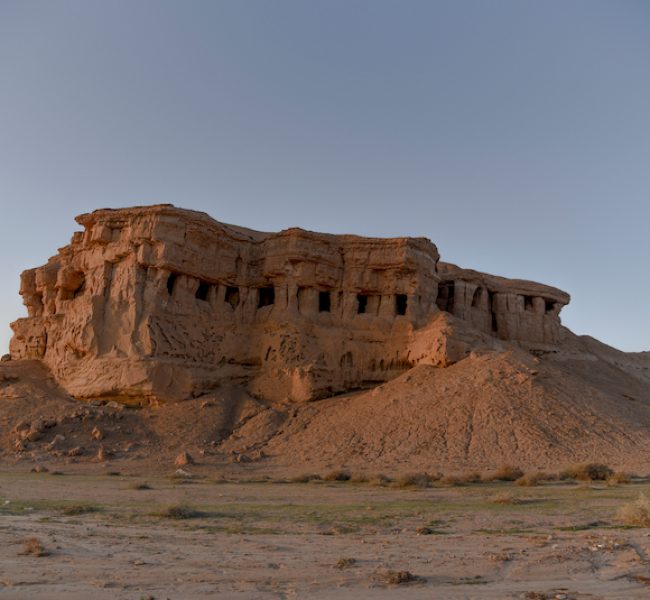
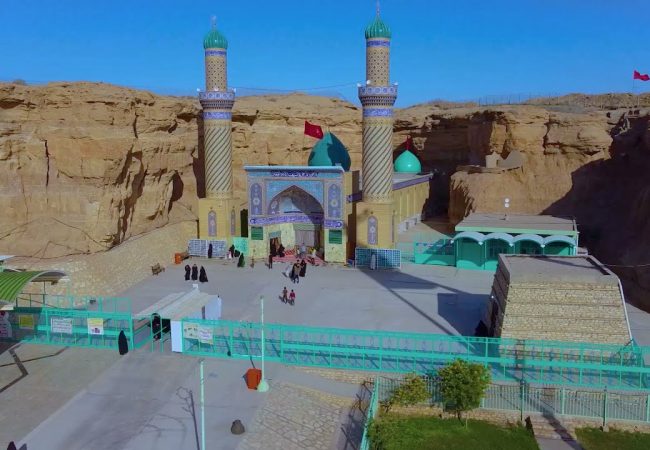
Imam Ali Dropper Shrine - A Sacred Water Source in Karbala
It is a fountain called Imam Ali Dropper Shrine, located in the western desert of Karbala governorate, about 28 km away from the governorate center near Razzaza Lake. Historians say that when Imam Ali went to Sifin, his army caught up with thirst, then Imam Ali found in the middle of the desert a rock, which he peeled with his hand, and fresh water came out of it and is still flowing therefrom until now.
The area is defined from the end of the Kufa and Najaf plateau overlooking the depression of Razzaza Lake, where there was a lot of streams of water that descended through the layers of the plateau’s soil. In the mid-nineties, this site was considered to have a connection with one of the narrations that indicate that Imam Ali came to this site seeking water.
Razzaza Lake - Iraq's Key Water Body and Wildlife Haven
The lake is directly derived from the Euphrates River, making it an essential part of the river’s intricate network of water bodies. It is recognized as the second largest water body in Iraq, surpassed only by the vast Therthar Lake in size. However, its importance extends far beyond its size. The lake is a unique and valuable ecological resource, particularly known for its distinctive salty water.
This salinity is what contributes to the lake’s importance as a habitat for a variety of wildlife. It is one of the key water bodies in Iraq, serving as a crucial environment for numerous migratory bird species that depend on it as a stopover during their long journeys. In addition to its role in supporting birdlife, the lake is also home to a wide range of fish, making it an essential resource for local fishermen and contributing to the region’s biodiversity. This combination of factors solidifies the lake’s status as a significant natural site in Iraq.
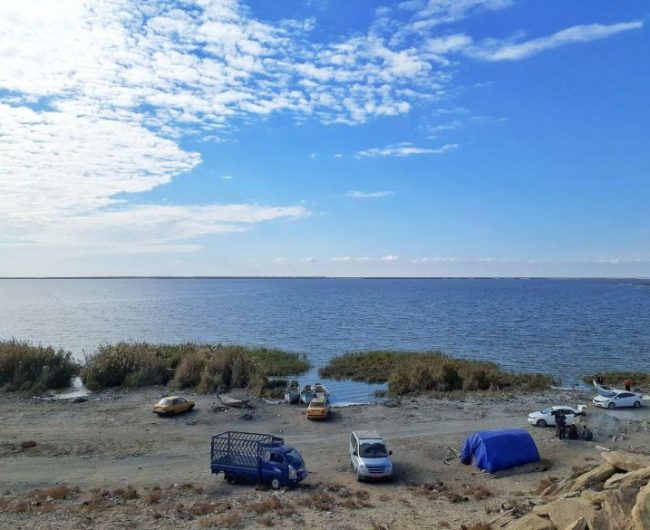

Chamoun Palace - A Historic Landmark in Ain Al-Tamr, Karbala
Ain Al-Tamr is a historically significant site, known for housing one of the most ancient and remarkable archaeological palaces in Iraq. This palace not only holds the distinction of being the oldest in the entire Karbala governorate, but it also stands as one of the most important and prominent historical and cultural monuments in the region.
Its architectural grandeur and the deep cultural heritage it represents make it an invaluable piece of Iraq’s history. The palace serves as a testament to the rich legacy of the area, offering visitors a glimpse into the past while underscoring the region’s importance in the broader historical context of the Middle East. It remains a key symbol of both historical significance and cultural pride.
Exploring the Ruins of Mujada - A Historical Landmark Near Karbala
The Mujada Lighthouse is located in the city of Karbala. It is located near the city of Karbala in the middle of the Western Desert and is about 40 km away from it. Specifically, the lighthouse is located to the left of the road between Karbala and Ain Al-Tamr district and is located about 14 km south of the city of Karbala. The date of its construction is not known.
As for its shape, it is a cylinder-shaped base with a square base that is more than 30 meters above the surface. The Ruins of Mujada were named “Al-Mawqada”, which is a local word for the kindling of fires at its top at the night of those who went astray in the desert.
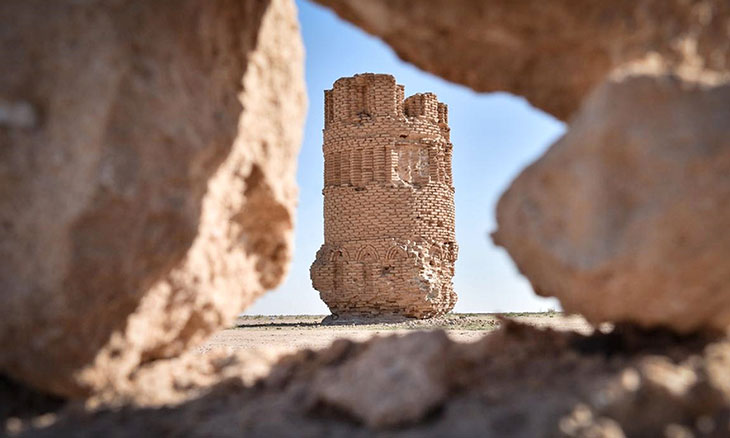
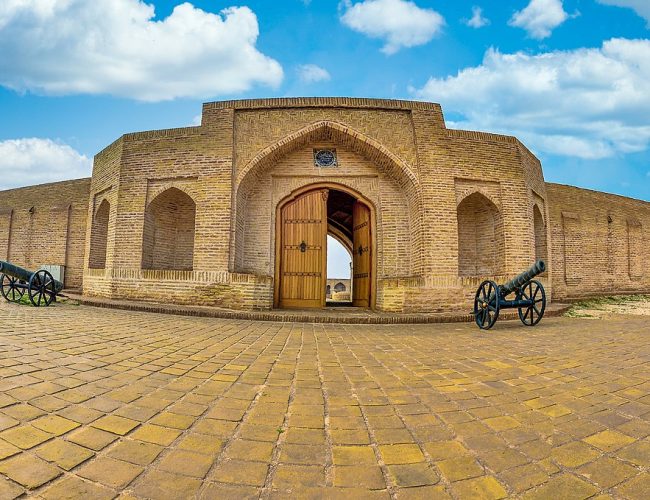
Khan al-Rub’ or Khan al-Nakhilah - A Historic Rest Stop Between Karbala and Najaf
One of the most significant archaeological khans in Iraq, this historic site is located approximately 16 kilometers from the center of Karbala Governorate. Known as Khan Al-Rub’, it is situated at a strategic point, being a quarter of the distance between the holy cities of Karbala and Najaf. The construction of this khan dates back to the Ottoman era, specifically during the reign of Governor Suleiman Pasha the Great in the year 1983 AD.
Over time, it has served as an essential rest stop for travelers, caravans, and pilgrims passing through the region. In 1897 AD, the khan underwent a major reconstruction to maintain its function as a crucial resting place. More recently, in 2011, the khan was once again renovated and restored to preserve its historical significance and ensure it continues to serve the needs of modern-day travelers and pilgrims.
The History and Significance of Al-Hussain Shrine in Karbala
Karbala, the city of martyrdom and redemption, occupies a prominent place in the hearts of Muslims and they long for it when they are thousands of miles away from it. It is the place in which the father of the martyrs, Imam Al-Hussain Ibn Ali Ibn Abi Talib was martyred on the tenth of Muharram in the year 61 AH / 680 AD in the famous historical incident of Al-Taf.
Regarding the history of Al-Hussain Shrine, which goes back to ancient times, historical sources say that the first building that housed the immaculate tomb dates back to the year 65 AH / 685 AD, and after nearly two centuries, the Abbasid Caliph al-Muntasir Billah 247 AH / 861 AD renovated the tomb and in the fifth century AH Al-Hassan bin Fadl built a wall surrounding the shrine.
Al-Hussain Shrine consists of a courtyard, a hall, a hallway, and an inner garden, and in the middle of it is the holy shrine.
The dome is located above the mausoleum and is surrounded by two minarets painted with gold. The Iraqi architecture mastered its construction and became one of the verses of Islamic architecture.
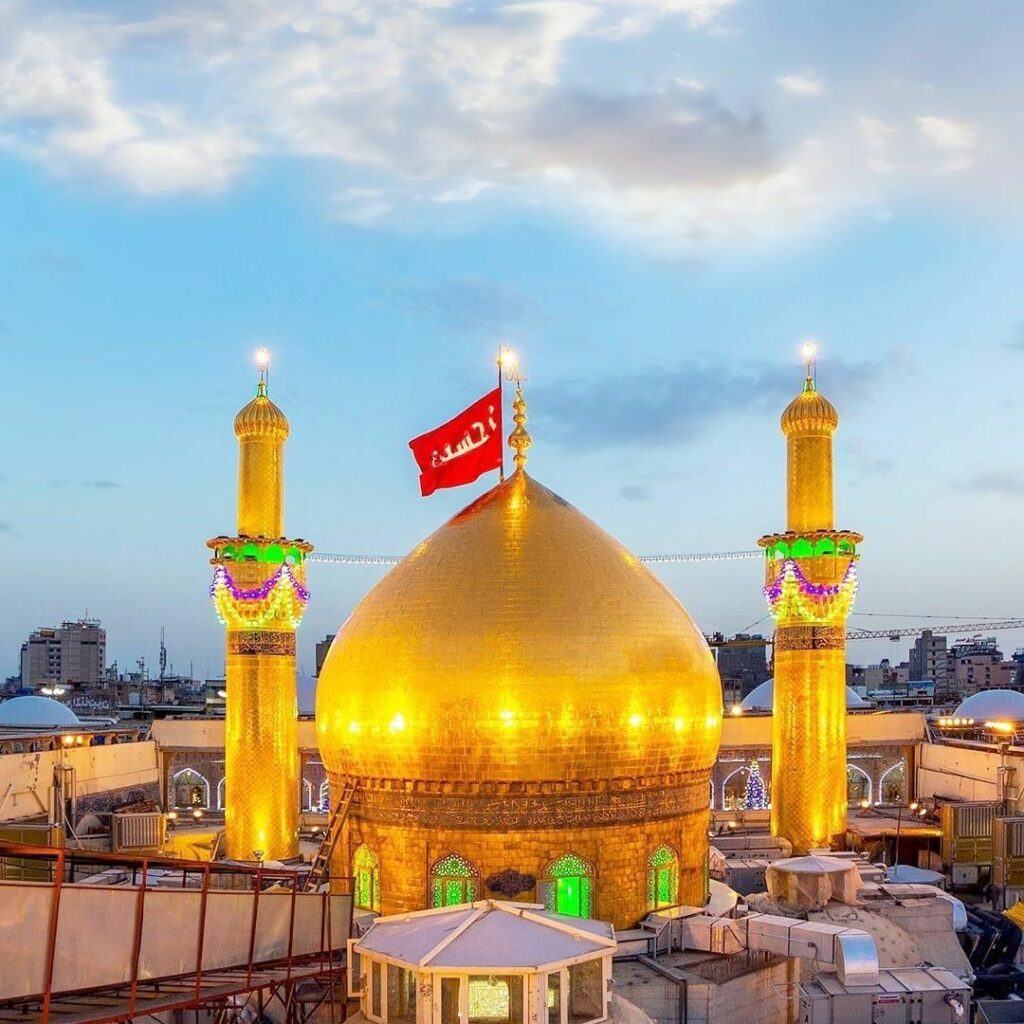
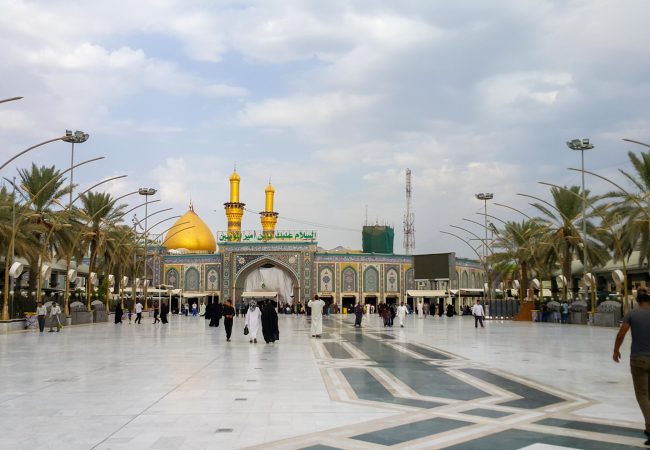
The Abbasid Shrine - A Historical and Architectural Marvel of Iraq
The Abbasid Shrine houses the holy shrine of Imam al-Abbas, who was martyred alongside his brother Imam Hussain in the Battle of Al-Taf in 61 AH. A shed was built above his tomb after 34 years to stabilize its structure, and construction continued until it reached its current form.
The two shrines, Al-Hussain and Abbasid, are symmetrically located in the heart of the city, with only 300 meters separating them. The Abbasid Shrine is a masterpiece of Arab-Islamic architecture, with intricate artistic decorations adorning every corner, reflecting splendor and perfection.
Like the Al-Hussain Shrine, the Abbasid Shrine is one of the most luxurious holy sites in Iraq, renowned for its vast area and priceless antiques.
Frequently Asked Questions About Traveling to Karbala – A Guide by World Gate
The best time to visit Karbala is during the cooler months, from October to April, as the weather is more comfortable for outdoor activities and religious ceremonies.
Karbala is easily accessible by road from Baghdad, which is about 80 kilometers away. You can take a taxi, bus, or private car. The nearest airport is in Baghdad, and from there, you can travel by car or bus to Karbala.
Yes, visitors to Iraq require a visa. It is recommended to apply for a tourist visa at the nearest Iraqi embassy or consulate before your trip.
The most important attractions in Karbala are the Imam Hussain Shrine, the Abbasid Shrine, the shrine of Hazrat Ali Asghar, and the site of the Battle of Karbala.
Karbala is generally considered safe for visitors, especially during religious events like Ashura. However, it is always best to check travel advisories and local news before planning your trip.
Karbala is known for its religious events, especially the Ashura commemorations, which mark the martyrdom of Imam Hussain. Other important events include Arbaeen, the anniversary of Imam Hussain’s martyrdom, and various other Islamic festivals.
Yes, there are several travel agencies that offer guided tours to Karbala, including World Gate, which can arrange for a comprehensive tour with transportation, accommodations, and a guide to take you through the city’s religious and historical sites.
Modesty is important when visiting religious sites in Karbala. Men should wear long pants, and women should wear a headscarf and loose, long clothing to cover their arms and legs.
Yes, Karbala has a wide range of accommodations, from budget hotels to luxurious ones, especially around the religious shrines. It is recommended to book your stay in advance, especially during peak religious seasons.
When visiting Karbala, it’s important to respect local customs. Always show respect for religious practices, keep noise levels low near shrines, and follow local guidelines regarding photography, especially inside religious sites.
